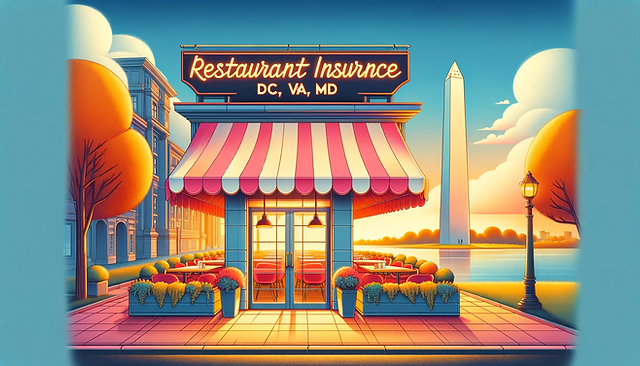Food contamination is a serious risk for any restaurant, and it can have severe consequences for both public health and business operations. Whether due to an accident, negligence, or external factors, contamination can lead to significant financial losses, reputational damage, and legal liabilities. Food Contamination Insurance is designed to protect restaurants from these risks by providing financial coverage for incidents involving contaminated food products. This guide explores what Food Contamination Insurance covers, why it’s essential for restaurants, and how to select the right policy.
What is Food Contamination Insurance?
Food Contamination Insurance is a specialized type of insurance that provides coverage for financial losses and liabilities arising from food contamination incidents. This insurance is crucial for restaurants, catering businesses, and other food service providers, as it helps manage the risks associated with serving contaminated or unsafe food to customers.
Key Coverage Areas
- Contaminated Food Recall Costs: Covers the expenses associated with recalling contaminated food products. This includes costs for public notifications, product retrieval, and disposal of contaminated goods. For restaurants, this might involve recalling food products that have been sold to customers or used in food preparation.
- Business Interruption: Provides compensation for lost income and additional expenses incurred due to a food contamination incident that disrupts restaurant operations. This coverage helps mitigate the financial impact of downtime and operational disruptions caused by contamination issues.
- Legal Liability: Covers legal costs and damages related to lawsuits or claims arising from food contamination. This includes attorney fees, court costs, settlements, and judgments resulting from allegations of negligence or failure to ensure food safety.
- Medical Costs: Provides coverage for medical expenses incurred by customers who suffer illness or injury due to food contamination. This includes costs for treatment and, in some cases, compensation for long-term health effects or disability.
- Public Relations and Crisis Management: Covers costs associated with managing the public relations fallout and crisis communications following a food contamination incident. This includes hiring PR experts, issuing press releases, and addressing customer concerns to restore your restaurant’s reputation.
- Loss of Inventory: Provides compensation for the loss of inventory due to contamination. This includes the cost of disposing of contaminated food products and replacing them with safe alternatives.
- Regulatory Fines and Penalties: Covers fines and penalties imposed by regulatory authorities for violations related to food safety and contamination. This is particularly relevant if a contamination incident leads to investigations or legal actions by health departments or other regulatory bodies.
- Reputation Protection: Helps manage the costs associated with protecting and rebuilding your restaurant’s reputation after a food contamination incident. This can include marketing efforts and customer loyalty programs to regain trust and mitigate long-term damage.
Why is Food Contamination Insurance Important for Restaurants?
Restaurants are particularly vulnerable to food contamination risks due to their reliance on food handling, preparation, and storage. Here’s why Food Contamination Insurance is crucial for your restaurant:
- Mitigates Financial Loss: Food contamination incidents can result in significant financial losses, including recall costs, legal liabilities, and business interruption. Food Contamination Insurance helps manage these costs, protecting your restaurant’s financial stability.
- Protects Against Legal Risks: Legal claims related to food contamination can be costly and damaging. Insurance coverage helps cover legal defense costs and potential settlements or judgments, reducing the financial burden of defending against such claims.
- Ensures Business Continuity: A contamination incident can disrupt your restaurant’s operations, leading to lost income and additional expenses. Food Contamination Insurance provides coverage for business interruption, helping you recover from operational disruptions and resume normal activities.
- Enhances Food Safety Practices: Knowing that you have insurance coverage in place can encourage adherence to rigorous food safety practices. This helps reduce the risk of contamination incidents and supports the overall safety of your food service operations.
- Supports Reputation Management: A contamination incident can damage your restaurant’s reputation and erode customer trust. Insurance coverage helps manage the costs of public relations efforts and crisis management, allowing you to address the situation effectively and restore your restaurant’s image.
- Provides Regulatory Protection: Food safety regulations are stringent and non-compliance can result in fines and penalties. Food Contamination Insurance covers regulatory fines and penalties, ensuring that you are financially protected in the event of regulatory actions.
How to Choose the Right Food Contamination Insurance Policy
Selecting the appropriate Food Contamination Insurance policy involves several key considerations to ensure that your restaurant’s specific needs are met:
- Evaluate Your Risks: Assess the types of food products you serve, your food handling and preparation processes, and potential sources of contamination. Understanding your risks helps determine the coverage you need.
- Determine Coverage Limits: Coverage limits refer to the maximum amount your insurer will pay for a claim. Ensure that your policy provides adequate limits based on the value of your inventory, potential recall costs, and the scale of your operations.
- Review Policy Exclusions: Be aware of any exclusions or limitations in your policy. Common exclusions might include contamination resulting from intentional acts or pre-existing conditions. Understanding these exclusions helps identify potential gaps in coverage.
- Compare Policies: Different insurers offer varying levels of coverage and pricing for Food Contamination Insurance. Compare policies from multiple providers to find one that best suits your restaurant’s needs and budget. An insurance broker specializing in food industry risks can assist with this process.
- Consider Additional Coverages: Depending on your restaurant’s specific needs, you might need additional coverages such as coverage for third-party vendor contamination or extended reputation protection. Evaluate your requirements and consider adding these optional coverages to enhance your policy.
- Implement Food Safety Practices: While Food Contamination Insurance provides essential protection, implementing strong food safety practices can help prevent contamination incidents. Invest in staff training, regular inspections, and adherence to health and safety standards to minimize risks.
- Review and Update Your Policy: As your restaurant’s operations and menu offerings evolve, update your Food Contamination Insurance policy accordingly. Regular reviews ensure that your coverage remains adequate and relevant to your changing business needs.
Real-Life Examples and Case Studies
Understanding the impact of Food Contamination Insurance can be clarified through real-life examples and case studies:
- Case Study 1: Salmonella Outbreak: A restaurant experienced a salmonella outbreak linked to a contaminated batch of poultry. The Food Contamination Insurance policy covered the recall costs, medical expenses for affected customers, and business interruption losses. This coverage helped the restaurant manage the financial impact and resume operations.
- Case Study 2: E. coli Contamination: An outbreak of E. coli traced back to contaminated produce led to a widespread recall and public health concerns. The insurance policy covered the costs of recalling the affected products, legal defense against lawsuits, and crisis management efforts to address the public relations fallout.
- Case Study 3: Contaminated Ingredient from Supplier: A contamination incident involving a third-party supplier’s ingredient led to a recall of multiple dishes served at the restaurant. The Food Contamination Insurance policy covered the costs associated with the recall, loss of inventory, and regulatory fines, helping the restaurant navigate the situation effectively.
Conclusion
Food Contamination Insurance is a vital component of restaurant insurance, offering essential protection against the financial impacts of food contamination incidents. By understanding the key coverage areas, assessing your specific risks, and selecting the right policy, you can safeguard your restaurant’s operations, reputation, and financial stability. Investing in comprehensive Food Contamination Insurance ensures that your restaurant is well-prepared to handle the complexities of food safety, allowing you to focus on delivering exceptional service and maintaining high standards of food quality.



